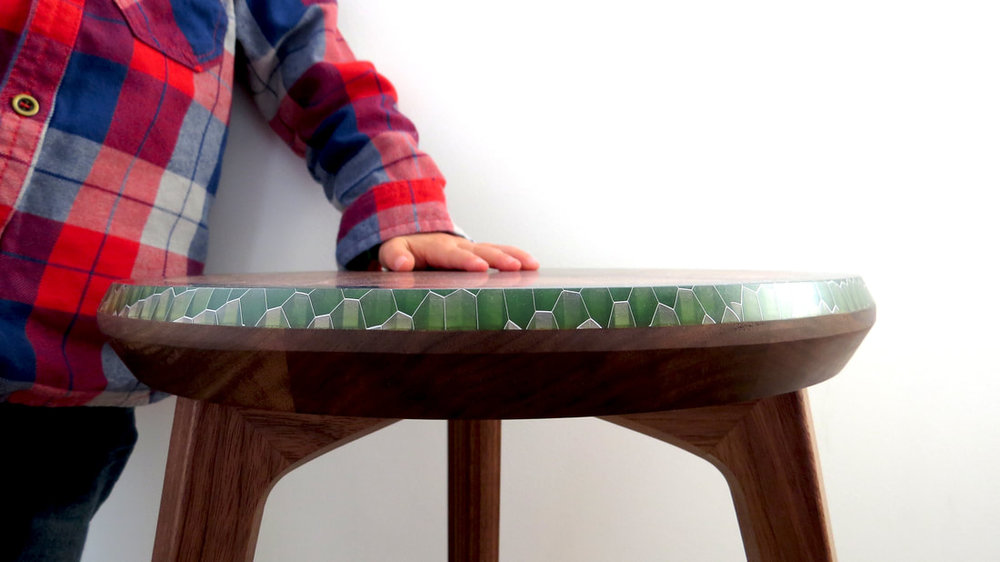
Credit: Elliot Design
Finding woodwork and furniture with a unique aesthetic can be a challenge at times. So when I first saw the honeycomb resin work of Antony Elliot I took notice straight away. It is so interesting and appealing to look at, and it really helps to set his work apart. I had never seen anything like it before.
But, no woodworker wants any one style, or one piece to define their work. This is also the case with Antony. He hasn’t limited himself and is constantly evolving and improving his designs. It’s the small details like leg chamfers and base profiles that make his work so good.
Based in his home workshop in Yorkshire, England— Antony is a designer, maker, and woodworker. He makes bespoke wood products ranging from lighting, to furniture, to key-rings. I caught up with him recently to find out a little more about him and his work.
Dónal Moloney: Antony, I appreciate you giving up your time to answer some questions, so thank you. I’d like to start at the beginning of your career. How did you get into woodworking? Was it something you started straight out of school? And was it something you had wanted to do, or something you just fell into?
Antony Elliot: Long story. My dad was a chief engineer on cruise ships. When he was home on leave he did everything around the house, and he did woodturning as a hobby. I always loved helping him and making things growing up. We restored an ‘82 Mini together when I was sixteen. After school I did A-levels, then went to Coventry University and got an M.Des in consumer product design. Whilst at Uni I did a work placement at Pearson Matthews Design Consultancy and spent most of my time in the rapid prototyping shop. Here is where everything took a detour, I had a stressful final year at Uni and after graduating I just wanted to get a summer job and have a few months back up north at home before heading out to look for a job. I fell into a job working for O’Neill surf shop— eventually becoming the manager. I never disliked it there, I got to work with like minded people, but I never really loved it. I really liked doing work on the house in my spare time and started designing and making a few wooden things. After twelve years of working at the shop and expecting our first child I found out they were closing the shop and I was being made redundant…. So I found myself with a bit of a chunk of redundancy money. I invested in a few decent tools, had a few months off with Gemma and Jed and started making some things. I started immersing myself and trying to learn as much as I could. A real turning point was watching some videos of Jory Brigham. He has a style that is similar to what was in my head and watching how he put things together made me think; I understand this, and I think with some practice and hard work I could do this. I started by making wooden lamps. They don’t require a lot of material and focusing on a small object means that the details and finish have to be perfect. Around this time I also started working with a very talented local carpenter working on a loft conversion. I was doing my own thing on the days he didn’t need me. I really learned a lot from him in a short period of time. A really good friend of mine had also just bought a house in London to renovate so I started travelling down there to help him four days a week. When he didn’t need me I was at home making furniture. Since finishing the London house I’ve just had my first year fully focusing on doing what I want to do (with a few other little renovation jobs thrown in around it).
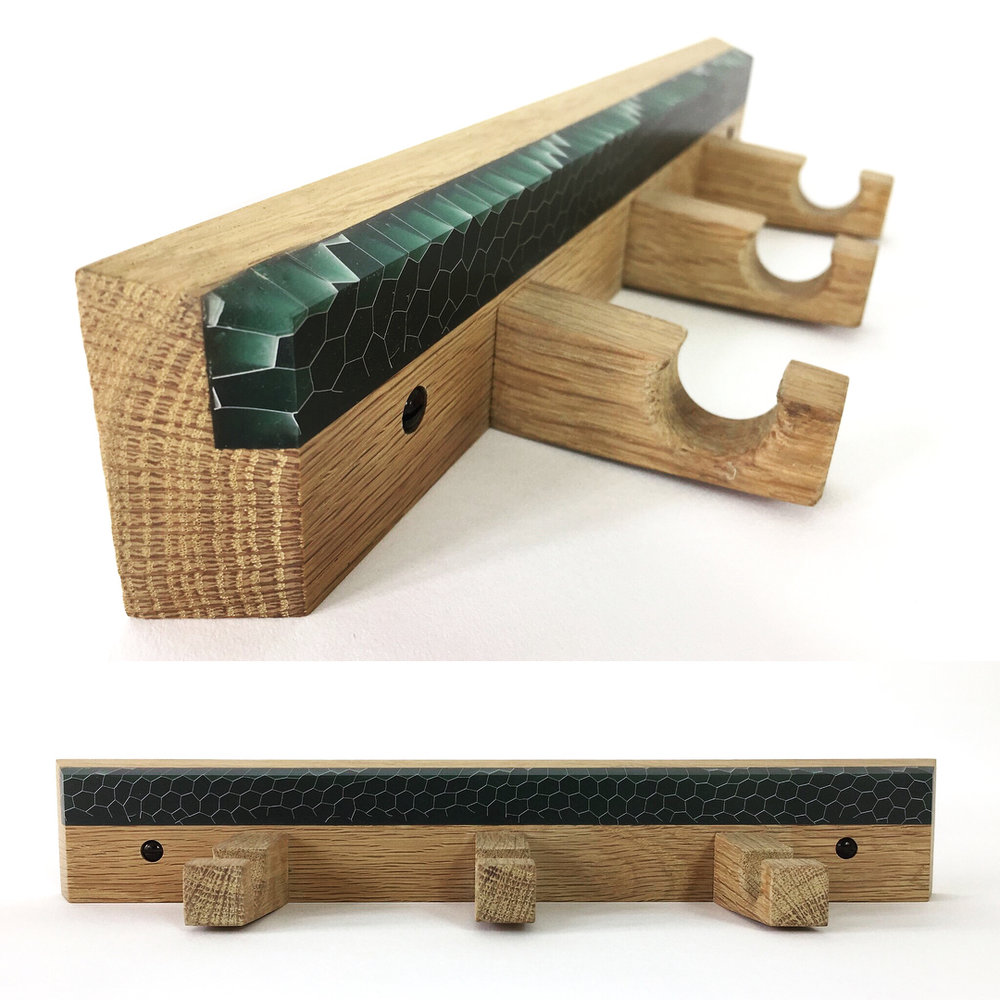
Credit: Elliot Design
DM: One of my reasons for doing this series of interviews is to talk to woodworkers who create great work. I think your work is outstanding. I’ve never seen anyone else do the type of honeycomb resin work you do. It is so interesting, unique, and beautiful. Where did you come up with the idea for doing this? Is it a process you enjoy doing? What are the challenges in producing this type of work?
AE: I saw something similar somewhere but only focusing on the top view, and became a bit obsessed with trying to recreate it, so I bought some resin and some aluminium honeycomb and pigments and had an experiment trying to create a small sheet of it in a silicone mould. It was a disaster, didn’t work anything like I thought it would and shelved the idea for over a year. This was all before resin was such a big thing, and it was mainly used to just fill and stabilise knots. I watched quite a few videos on YouTube with people mixing pigments to best match the wood colour, and decided I was using the wrong kind of resin. Anyone worth their salt was using West Systems epoxy. I had a piece of timber that had a big soft knot that had fallen out so I thought I would have a go at filling it with resin but to be a bit different I would do a contrasting colour and drop some of the honeycomb in there. It was a massive disaster, I used a fast set resin, and poured loads of it in the hole that was about 35mm deep, the result was a massive exothermic reaction, it started smoking frothed up and I thought I was going to set the workshop on fire. I ended up routing out the mess and re-pouring the top 10mm of the resin, and this worked out okay. I posted about it on Instagram, got some feedback from a few people and figured out I needed the slow set and to limit the thickness of the pours.
The more distinctive part of the honeycomb resin (the edge) came about a bit by accident, I made a coat rack and found that when I cut away the edge on an angle that it created some really interesting depths of colour and triangular shapes. The off cut from this I initially binned but then I got it out of the bin and cut up and made into key-rings. I posted them up on instagram I didn’t think anyone would buy one but they sold out in about 30 minutes. So from then on it was all about putting the focus on the cut-away edge. It can be a bit hit and miss, sometimes you get very uniform areas that aren’t as interesting as others. I’m by no means a resin expert but I’ve found a method that works for what I want to achieve. I do enjoy the resin part, you never quite know what you will get until you cut away the edge.
However I don’t want everything I do to be about this technique. I’m actually not a fan of the big resin pours or resin river tables, mainly because too many people are doing it now. It’s not really anything unique anymore. I always like to try and do something a bit different to what other people are doing. I like to try and keep my resin details to be a small feature on a piece, and not every piece warrants it..
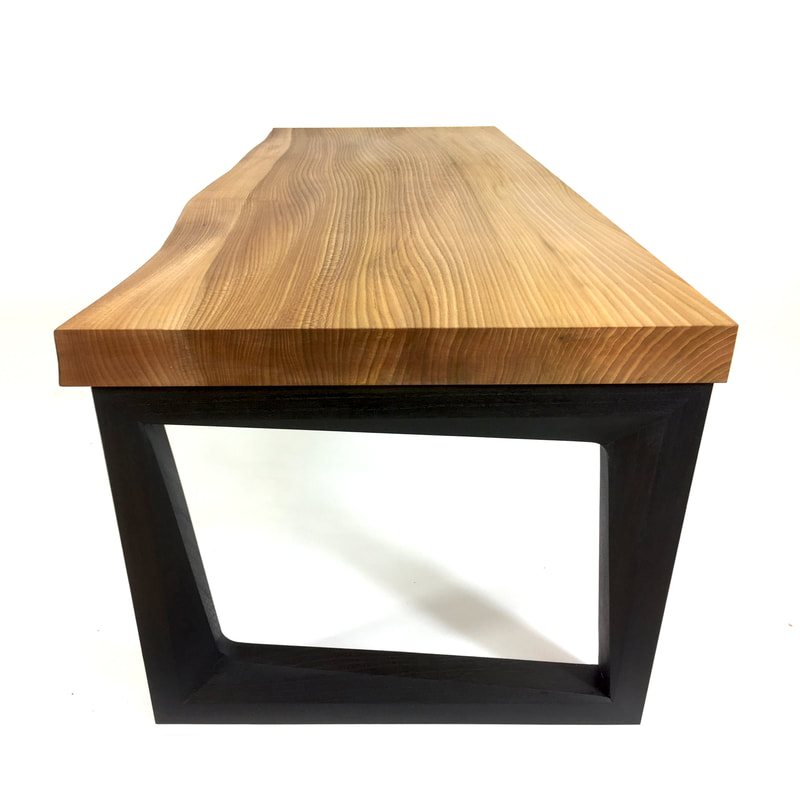
Credit: Elliot Design
DM: You’re a one-man business. Like many of us, you work alone in a workshop all day. From my own experience this has obvious positives and negatives. Tell me about how you like to structure your day. Do you relish the peace, or are you keen for more human interaction? And as a one-man show, what are the business challenges you face?
AE: I work from a small home workshop that is great as my commute requires about 10 steps out the back door. The lack of space can be incredibly frustrating at times though. And I can’t work at unsociable hours as I have neighbours nearby. I would love to have something bigger and better equipped in the future. An extremely good local kitchen maker Paul Barrow very kindly lets me go and use some of his big machines when I need to.
Creatively I have always worked better as a part of a group, I really like sparking ideas off other people. Although sometimes you just have to trust your instinct, other people’s input can dilute good ideas down too much. I really like Instagram. There is a really nice group of people that are incredibly supportive of what I’m doing that I chat to regularly and respect the opinion of. It takes the sting out of being on your own all day.
I can’t say I have a set structure to my day. It often depends on how motivated/creative I’m feeling. If I’ve not got any paid work on, I do try and go out to the workshop and just do something. I do find myself sitting out there for hours holding bits of wood up and trying to create something, or sitting sketching ideas. I think it would be better sometimes just to go out on my bike for a bit. It’s a kind of self imposed feeling of guilt when you are self-employed that you should always be trying to do things. I think the hip Americans on Instagram call it #hustle. Once I get something in my head I’m extremely focused. Everything else goes out the window, I even forget to stop to drink tea.
The business side is a tricky one. Some parts I’m okay with. From my previous experience as a retail manager keeping track of expenses etc, and the customer service side of things I know what I’m doing.
Marketing is an area that I really struggle on. I am looking at ways of trying to get my work noticed and start getting some more work coming through. Currently what I’m doing is making things and trying to sell them, building up my portfolio of work at the same time. I know its not the best business plan at the moment. I do have a shop in Shoreditch in London that takes anything I make to sell on a sale or return basis. I have been lucky that in the past year I have had two customers in particular that have commissioned quite a lot of furniture from me, and both have given me quite a bit of creative freedom in terms of the design too.

Credit: Elliot Design
DM: The Jed stool that you designed for your son, is one of my favourite pieces of yours. I’m sure one day when he’s older he will appreciate the beautiful craftsmanship a little more than he does now! What would you like your legacy to be for your family? How would you like your work, and your working life to be looked upon when you finish working?
AE: That chamfer on the leg that I use a lot was also a bit of an accident! It was before I had a router table and took a bit of a gouge out of the legs routing with a template and copying ring, so I ended up having to put a big chamfer on it to get rid of the gouge. It turned out so much better for doing so.
I hope that my family don’t ever say, we never saw him, all he did was work all the time, but I also hope they say that I worked hard.
I can’t imagine that as long as my mind and body are willing I will ever stop making things. I get twitchy if I don’t have anything to do. I find it hard going away on holiday. I like being busy doing things. What I really like about making things with my hands is that you start with some rough sawn timber, you put your mind and body into it, and become obsessed with every little detail of it. Then at the end there is something that you can see, and touch. It’s not like selling a t-shirt to someone.
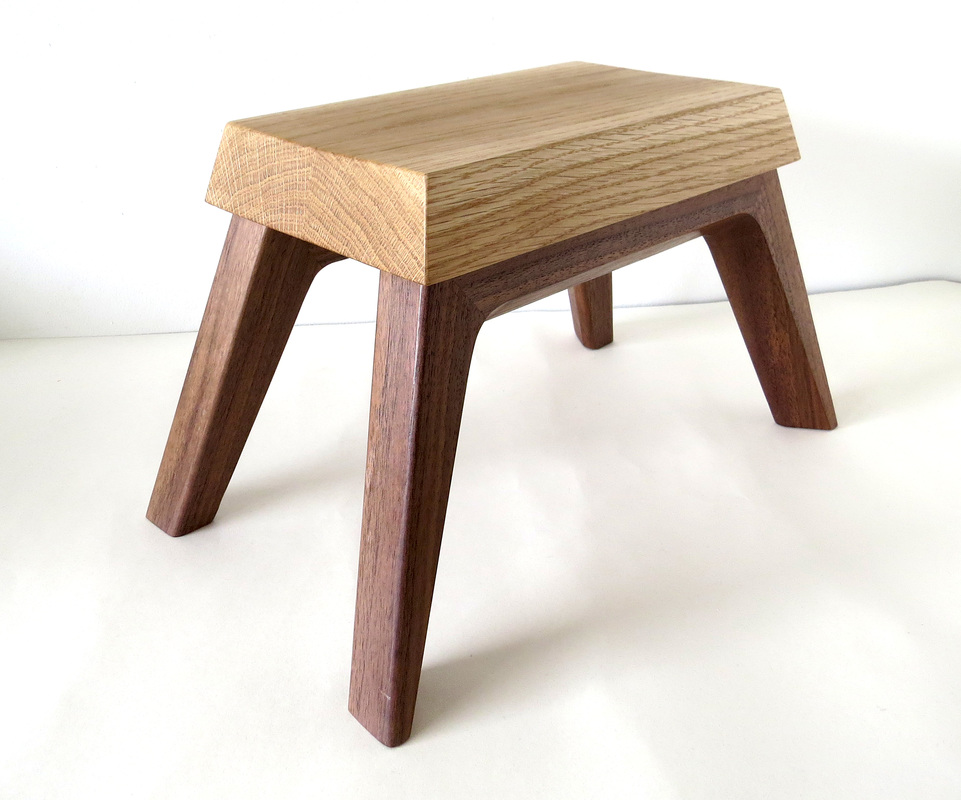
Credit: Elliot Design
DM: How do you define success? And do you consider yourself successful?
AE: I’m not really sure about this one. I would overall probably say; not yet. If you define success by selling lots of furniture and making loads of money then definitely not! Like I said earlier I’ve only really been fully focusing on this for about a year. I see and talk to so many extremely talented woodworkers especially on Instagram, that make beautiful work but we all have the same problem. We like making it but are not really sure how to sell it. In an ideal world I would mainly like to make what I want to make then try and sell it. With a few commissions thrown in, I think you need commissions to push you into doing different things you might not normally do.
On the other hand, I really love what I’m doing. I’m not stressed out, I make enough money to pay the bills, and I’ve made furniture that I am really proud of. I just need a few more people paying me to do it!
DM: What advice would you give a young Antony Elliot embarking on his woodworking career?
AE: Don’t be afraid to make mistakes. Those mistakes can sometimes turn out better than what you planned originally.
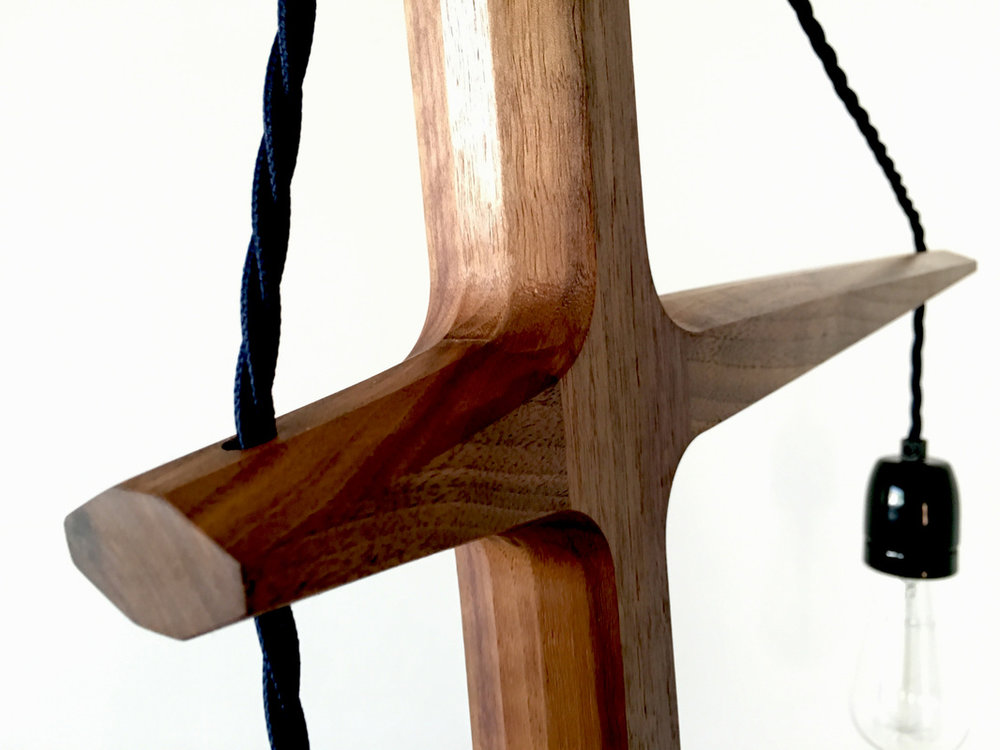
Credit: Elliot Design
QUICKFIRE:
DM: What was the last tool you bought?
AE: 150mm Shinwa ruler. I buy them 3 at a time. Not big or flashy but there is always one in my pocket and I use it every day.
DM: If you weren’t a woodworker, what other profession do you think you’d be good at?
AE: I would love to make props for films, especially something like Star Wars. That or, I really like being outdoors in nature and mountain biking, so maybe something to do with that.
DM: What app on your phone best helps you to do your job?
AE: Instagram – immediate feedback from peers, always learning new ways of doing things from people all over the world. If you don’t know how to do something you can ask and find out. I find it an incredibly supportive and friendly community of people. I’m always incredibly humbled when infinitely more talented people than me like what I’m doing. I feel a bit out of my depth being interviewed along side some of the other people who have featured on this blog.
DM: What is the most profitable/lucrative type of work you do?
AE: Bigger bespoke furniture items.
DM: What’s your favourite tune to blast out in the workshop?
AE: Frank Turner – losing days. One of the hardest working, and best live acts around at the moment in my opinion.
THANKS
I’d like to thank Antony for taking the time to answer my questions. I’ve admired his work for a while now. It has a very unique style, and a clean, elegant look. He shouldn’t feel out of his depth at any point. His work stands up with anyone else’s. The point of these interviews on Sawdust Etc is to learn more about the people who do great work. Whether these woodworkers are internationally renowned or not is irrelevant. Awards, Instagram followers, YouTube subscribers, or Facebook likes don’t matter. What matters to me are the interesting insights from people who do great work. Antony certainly fits the bill.
To find out more;
http://www.elliot-design.co.uk
https://www.instagram.com/elliotdesignuk/
P.S. If you liked this article, you may also like to get free and practical tips on woodworking techniques, business growth, productivity, and more in your inbox each week (you’ll also get the “How to Make a Living From Woodworking” PDF guide). Simply SIGN UP HERE to get exclusive access to a wealth of knowledge.
This post appeared first on https://www.sawdustetc.com